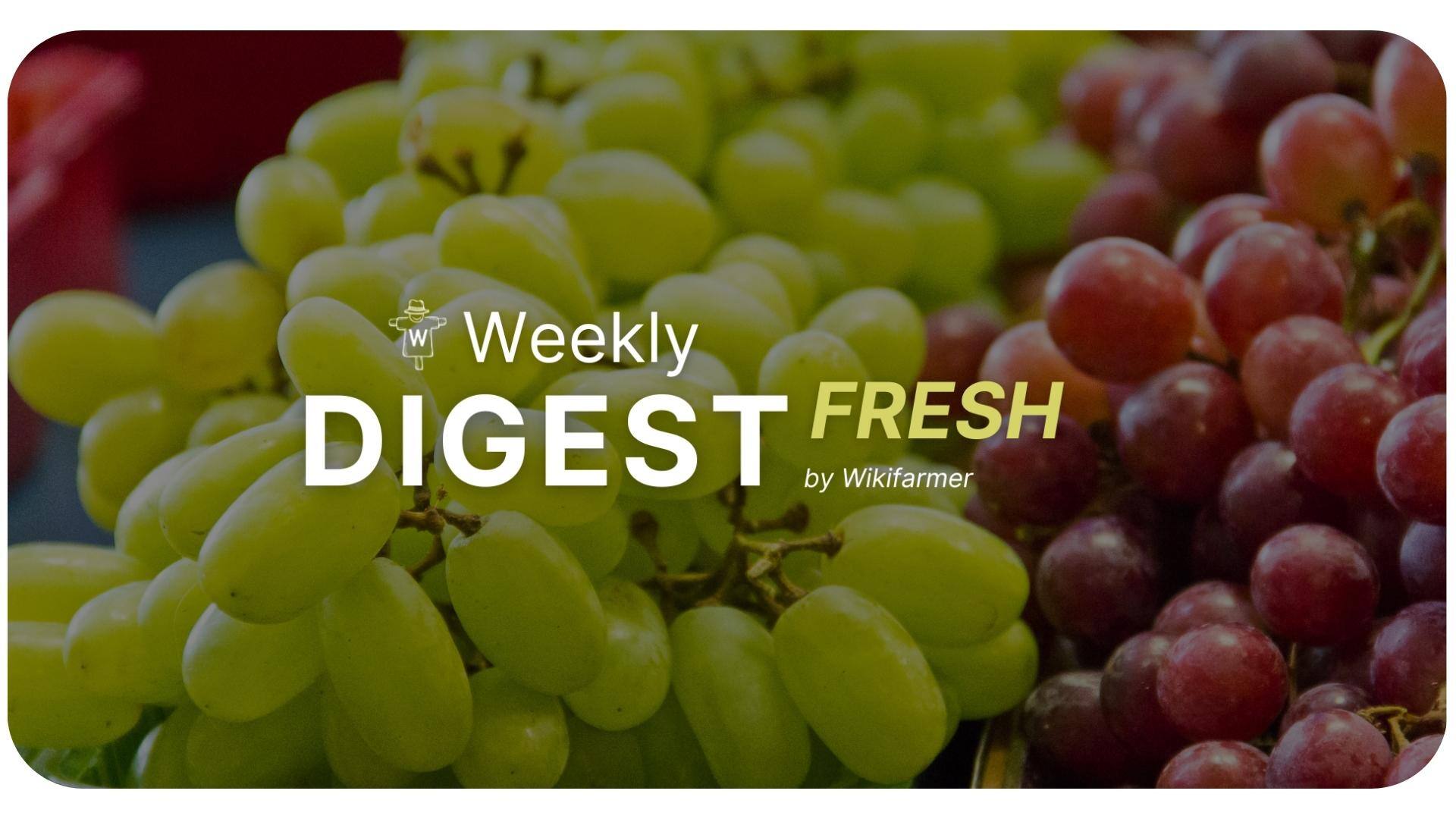Grapes Market Digest w32

Weekly updates on the grapes market
Price movements in the EU
The grapes market has been strong and in full swing, with southern European varieties arriving in Europe's wholesale markets. The demand has increased; however, the market has been slightly quiet since the summer holidays arrived, with operations being limited. Our experts and the price data from the German Federal Ministry of Food and Agriculture and the French Market News Network provide valuable information about this week's movements, which are also confirmed by Wikifarmer’s transactions.
-png-1.png?width=751&height=480&name=CWEcH-mean-fruit-prices-in-german-wholesale-markets%20(2)-png-1.png)
As we're moving into the European grape season, prices are decreasing, and offers are increasing. Specifically in German wholesale markets, the supply was primarily driven by Italian grapes, with Victoria and Black Magic varieties being particularly prominent. Additionally, Cotton Candy, Crimson Seedless, and Red Globe varieties have garnered significant attention. The arrival of the first Italia grapes is anticipated in the 32nd week, which will further diversify the product range. Contributions from Spanish, Greek, Turkish, and French suppliers also enhanced the sector. Egypt has been gradually retreating from the market while demand was modest and easily met. To boost turnover, sellers frequently offered discounts, with price increases being a rare exception. The same situation is mirrored in France, where prices remain relatively stable. However, Muscat Hamburg, a variety known for its high organoleptic properties, has decreased by 1 euro per kilogram due to the not-so-high demand in the market.
-png.png?width=769&height=492&name=X5z5c-mean-prices-in-the-rungis-market-fr-%20(10)-png.png)
The grapes sector has fallen to extremely high temperatures
Climate change has already affected numerous crops in different countries by damaging and decreasing yields. The Egyptian table grape season faced significant challenges due to high temperatures, which negatively impacted the growth stages of the grape crop, leading to an earlier-than-usual harvest. This early harvest caused Egyptian grapes to enter the market while Indian grapes were still present, complicating the marketing efforts at the start of the season. Despite these difficulties, demand for white grapes remained strong throughout the season, whereas demand for red grapes decreased earlier than expected. The season was ultimately joyous, with increased quantities and expansion into new markets in Europe, England, the Far East, Africa, and the Gulf, resulting in improved financial returns. To mitigate the effects of climate change, professional engineers and supervisors applied good agricultural practices, including optimized irrigation, fertilization, crop protection, and field operations to increase crop yields.
In addition, in California, extreme heat in the Central San Joaquin Valley, with temperatures reaching up to 46°C in July, has impacted fruit quality, making freshness and quick turnover crucial. Retailers are looking for better quality fruit, and growers are hopeful for improvements. The heat has particularly affected the early California crop, which can't withstand prolonged cold storage. The pricing for red seedless grapes, especially the Flame variety, is expected to remain firm due to heat stress affecting quality. Growers are transitioning to better varieties like Princess, Timpson, and Great Green, which are expected to boost retail performance.
-jpg.jpeg?width=757&height=1594&name=Untitled%20design%20(28)-jpg.jpeg)
Despite the challenges posed by climate conditions, Egyptian and Californian grape growers are adapting their strategies and operations to maintain and improve their market positions. With ongoing investments in infrastructure, new varieties, and marketing efforts, they are poised to navigate the complexities of the current agricultural landscape.
.png?width=450&height=87&name=New%20Logo%20(1).png)